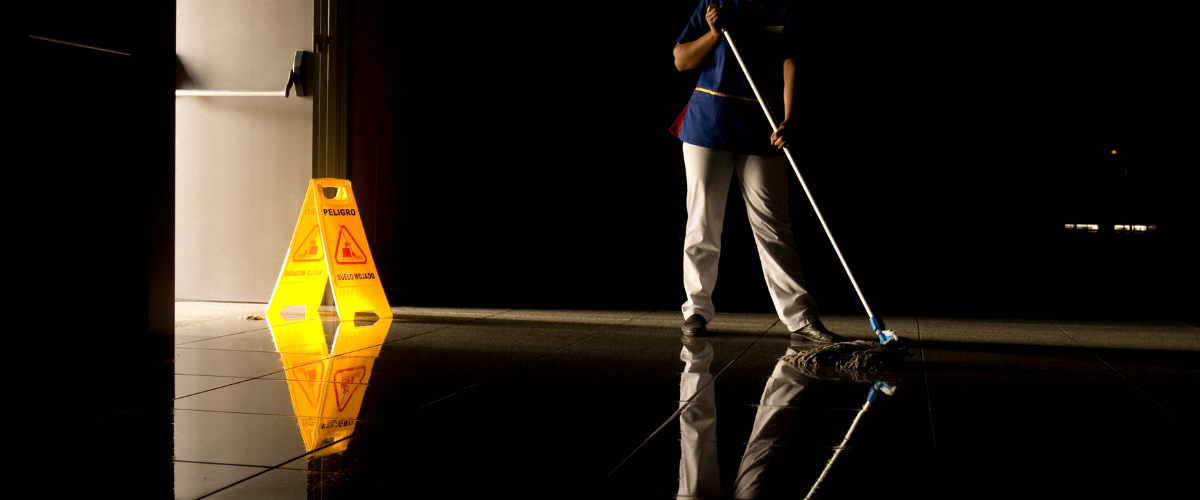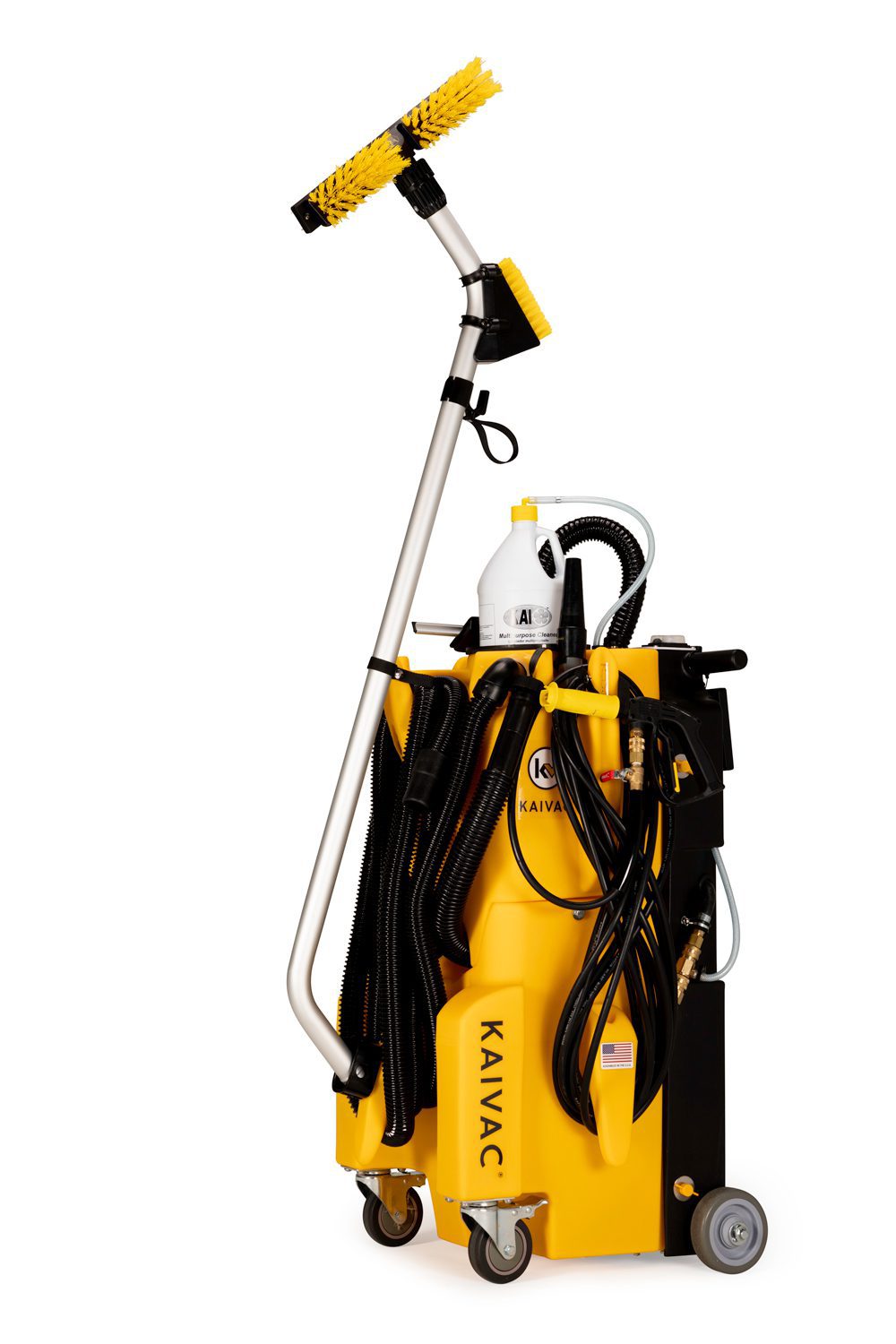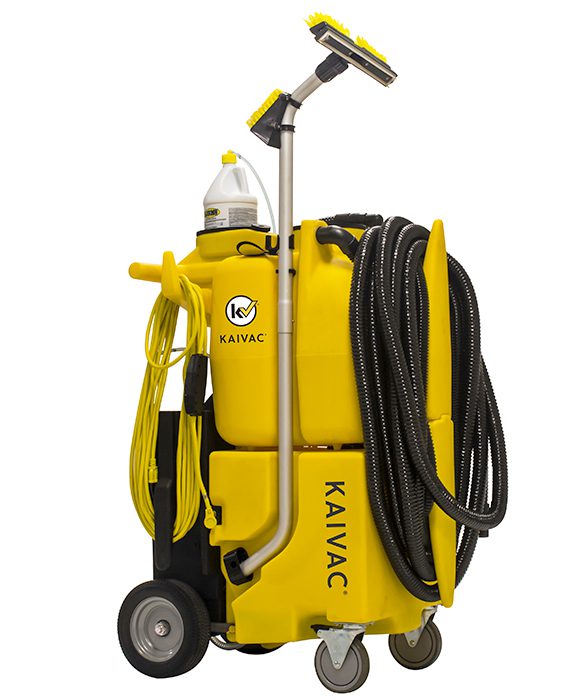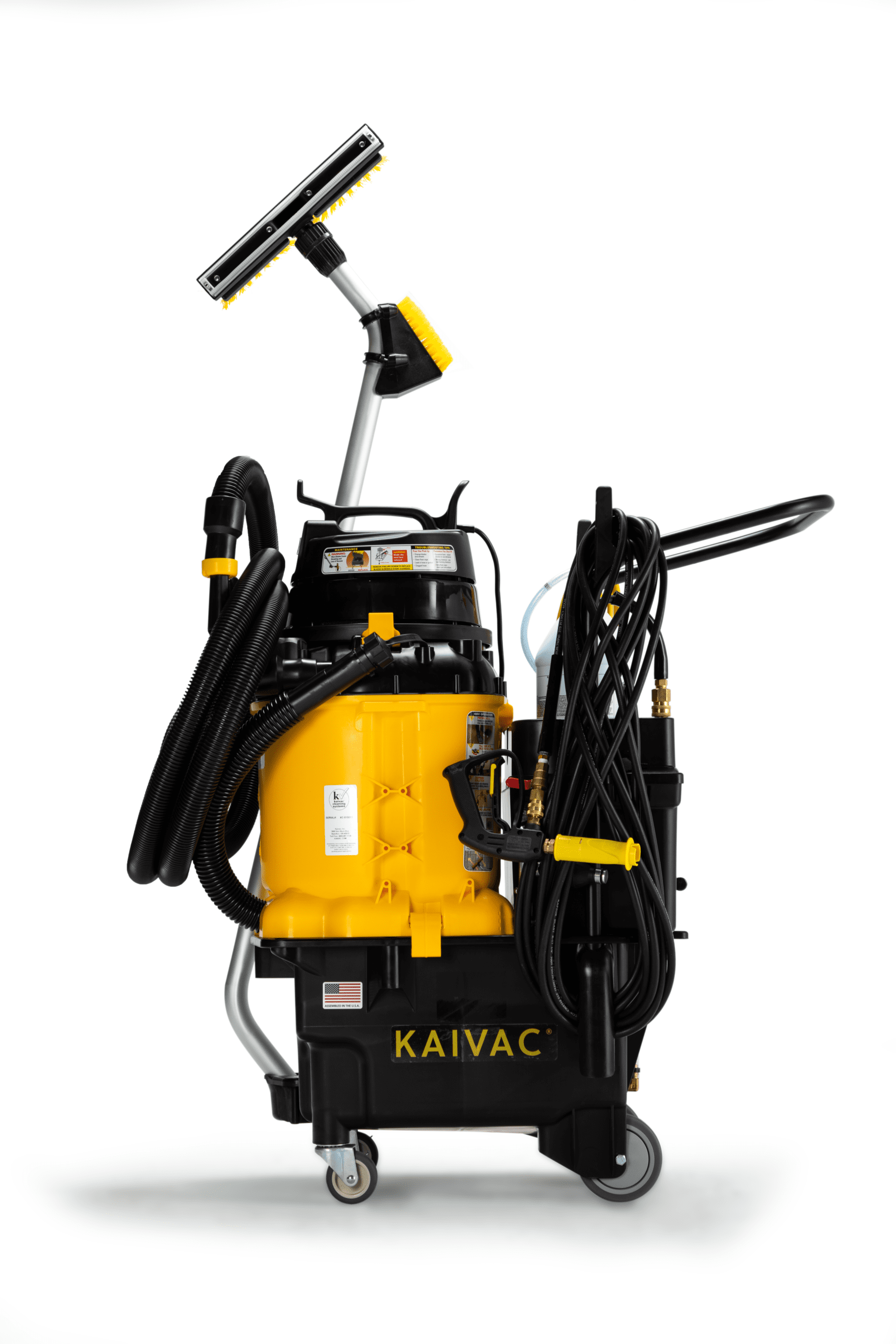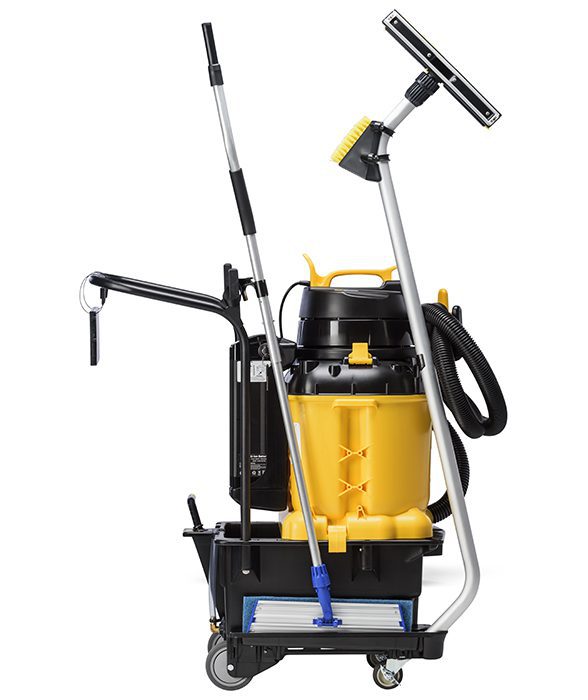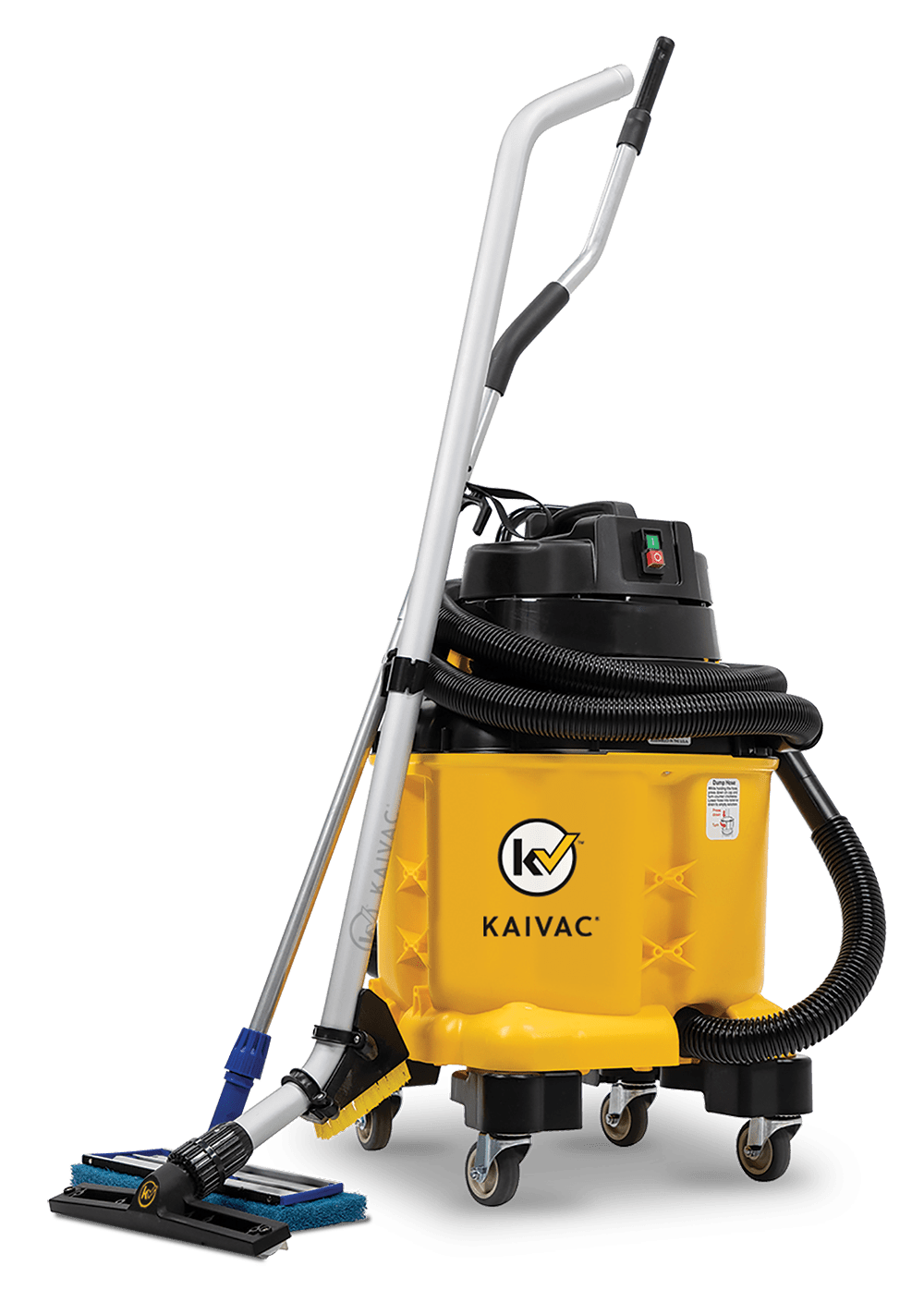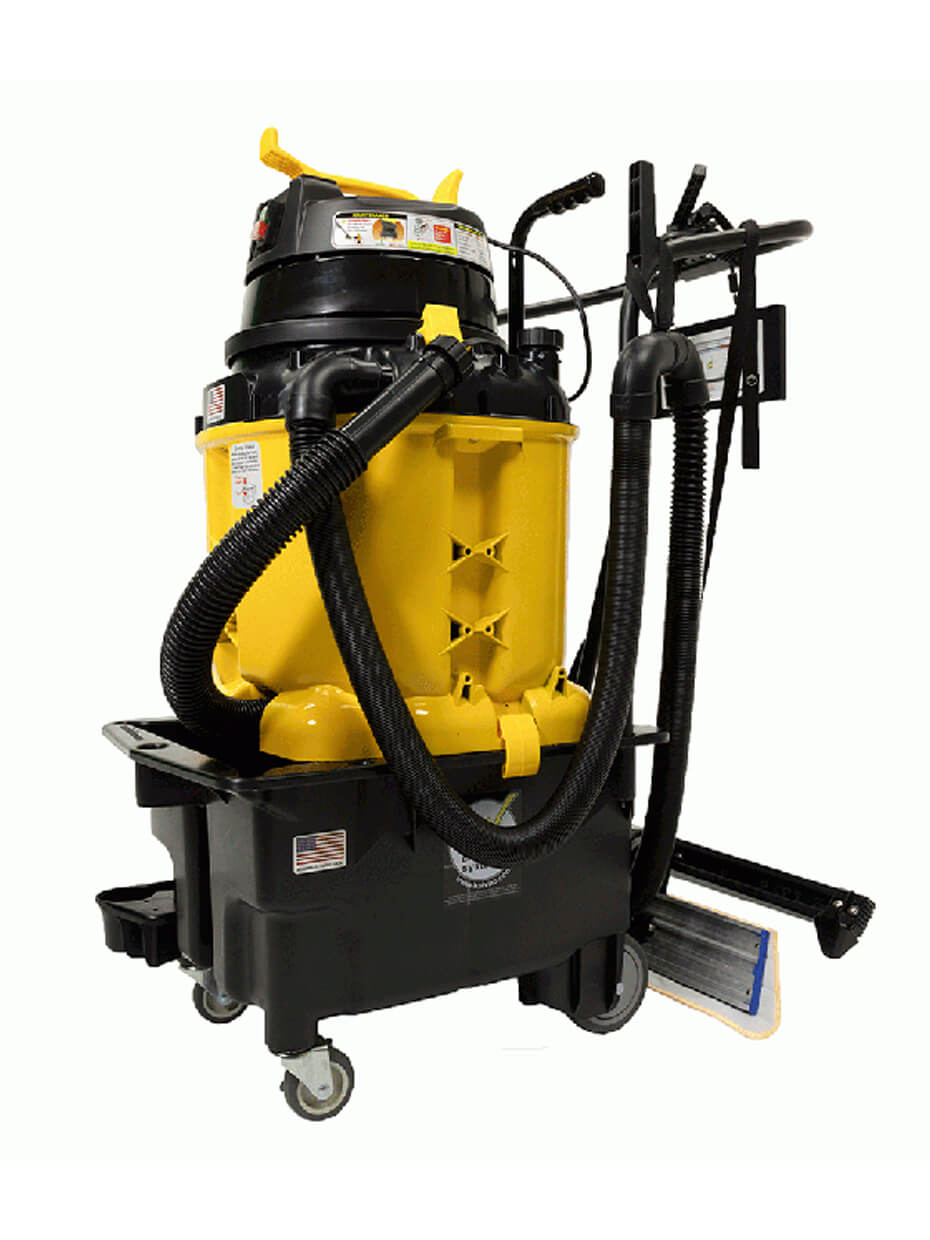Keeping expenses in check is crucial for a successful business. You’re probably painfully aware of your big-ticket items like labor, insurance, supplies, fuel, and marketing. But what about the unseen costs? These little expenses hide in plain sight and add up quickly. For instance, take the true cost of mopping. At first glance, mops seem relatively inexpensive to buy. (They’re not, but more on that later.) However, a quick look beyond the initial price tag reveals hidden expenses that eat into your bottom line.
Cleaning the Cleaner Costs Cash
Cotton string and microfiber mop heads are machine washable, but they need to be washed after every use to work properly. This cleaning schedule requires either an on-site laundry or an expensive contract with an outside facility. But even with these amenities, cleaning mop heads is no easy task.
String mops are difficult to wash and dry by design. Their cotton strings tangle and knot in machines. Microfiber mop heads are a bit easier to launder. But beware, microfiber is finicky. The material demands gentle detergent, low heat, and the strict avoidance of fabric softeners and dryer sheets. Mess up and microfiber loses efficacy, failing to remove dirt as well as when it was new.
Mop heads must also be replaced as they age. If your cotton string mop head starts losing strings, it’s time to buy another one. Microfiber mop heads last longer — about 250 wash cycles — but mopping ceramic tile with grout lines, a common flooring type in restrooms, kitchens and other spaces, wears them out faster.
Oh, and remember how we said mop heads are inexpensive to buy? Well, that small cost adds up quickly. In this blog we covered how much some quick serve restaurants spend on mopping. They spend too much. One QSR saw $1000 a year go out the door for old-fashioned, inefficient, and difficult-to-maintain technology.
Working Harder Costs More
It takes a surprising amount of physical effort to mop a floor. Wet mops weigh between three and five pounds when loaded with warm water and cleaning solution. Wringing the mop out requires strenuous bending and applying pressure to the wringer. But the real workout comes when dumping out the dirty water and cleaning solution bucket. Five gallons of water weighs over 40 pounds and that doesn’t count the weight of the bucket.
Incorrect mopping techniques compound the problem. In fact, mopping is one of the most dangerous tasks a janitor can perform, second only to handling trash, according to an ergonomics study by the University of California. That is because workers often reach away from their body and arch their back when performing the task. This puts their backs and shoulders at risk for a repetitive motion injury, like carpal tunnel syndrome, tendinitis, bursitis, and back pain. Performing that task every day increases that risk.
All of this potentially decreases your bottom line by taking employees out of rotation. According to Cleaning & Maintenance Management the Bureau of Labor Statistics found that repetitive motion injuries lead to an average of 18 lost workdays per injury.
The Price of Downtime and the Cost of Accidents
Spills happen. Here’s what it takes to clean them with a bucket and mop.
- Cordon off the affected area
- Wheel out the bucket and mop
- Fill bucket with water and cleaning solution
- Wet mop, wring until damp
- Clean spill by mopping using a figure eight pattern
- Flip mop halfway through the job and re-wring if saturated
- For a large spills, rinse, wring and repeat.
Sounds easy enough, but here’s how this protocol actually costs you money.
Most shoppers instinctively avoid an area with a fresh spill and stay away while it’s being cleaned. That takes a bite out of sales, but it’s better than shoppers accidentally slipping and falling. That kind of accident costs an average of $20,000 to business per incident, according to Business and Industry Connection.
And it’s not just shoppers. Your employee can slip and fall just as easily. Now you have an unavailable employee and a potential worker’s compensation case on your hands.
The Cost of Mopping Cross Contamination
Still not convinced that mops cost more than their initial price tag? Add in the potential for cross contamination and see that cost go way up. Proper cleaning protocols demand janitors use separate equipment for restrooms, kitchens, and front of house cleaning to prevent spreading germs and other dangerous pathogens around.
There are tools to facilitate this, including mop buckets that separate clean water from dirty water or color-coded microfiber mop heads that crews can change quickly as they move from room to room. But busy or untrained cleaning staff can forget or neglect best practices, risking the health and safety of your customers and employees.
The Best Clean at a Better Price
The true cost of mopping is high. But there are technologies that provide better cleaning at a great price.
Tools like the AutoVac Stretch from Kaivac offer a simple, high-speed option for cleaning wide-area, hard surface floors, while the nimble UniVac tackles smaller spaces.
The walk behind AutoVac Stretch dispenses cleaning solution directly to the floor and spreads it with a microfiber spreader pad. An integrated high-power vacuum/squeegee head sucks up the dirty solution leaving floors clean, shiny, and dry. The machine’s unique filter system allows the cleaning solution to be recycled, cutting down on the need for costly chemicals and saving refill time.
The UniVac cleans best on smaller, more congested, hard surface floors. The UniVac dispenses cleaning solution directly to the floor. Workers then use a speed scrubber to distribute and agitate the solution before sucking up the mess with the vacuum wand. Perfect for restaurants, the UniVac removes grease, picks up spills, and is even fun to use.
Don’t believe it? Marc Ferguson, food service director for Kaivac hears it all the time.
“One manager told me she buys the UniVac because her team members love using it,” he reports. Another operator said his team members race for the UniVac because “nobody wants to get stuck using the mop.”
Don’t get stuck using the mop. Click here if you’re ready for a better, less costly ways to service your floors.
